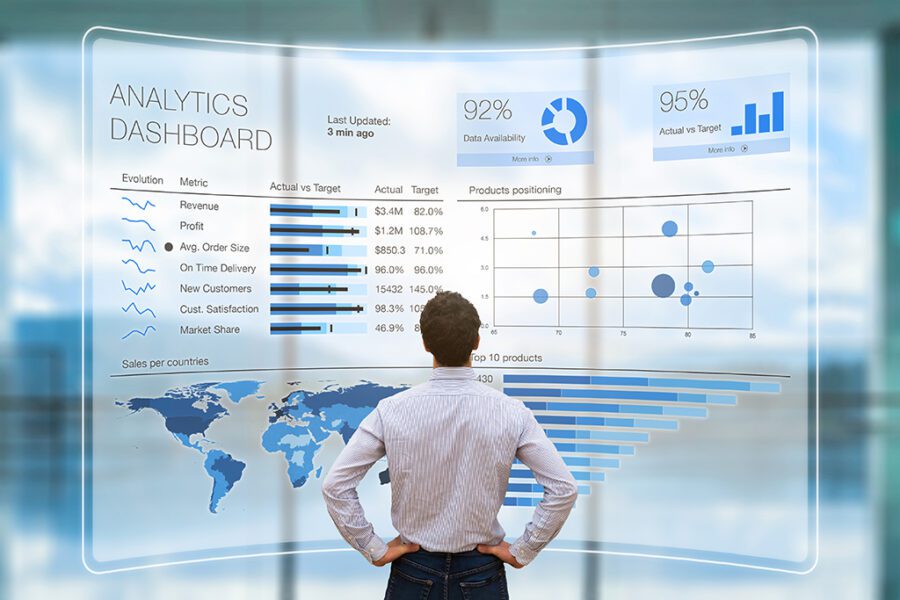In today’s business environment, data is a critical asset that can make or break an enterprise. Power BI and Microsoft Fabric are powerful tools that companies make use of to maximize the value of data. These platforms are at the core of business intelligence and, when used in conjunction with Azure Data Factory they become an effective tool for data analytics and decisions.
Power BI, Your Business Intelligence Companion
Power BI by Microsoft is an extremely powerful software for business intelligence that lets organizations visualize and share their data. Power BI users can create interactive reports and dashboards that transform raw data into useful information.

Power BI can be tailored to your particular requirements whether you’re an entrepreneur or a major business. It is able to seamlessly integrate with various sources of data that make it simpler to merge data from several platforms and databases. Its simple drag and drop interface enables even non-technical users to create relevant reports.
The Power BI platform supports real-time data processing, which means that you’re always working with most recent data. It has a broad range of visualisations, which allows you to display data in the most digestible and compelling way. It is essential to share and collaborate on reports. This can help in improving the decision-making process within your organization and encourage a data-driven environment.
Microsoft Fabric: Weaving Data Excel
Microsoft Fabric is the base framework that connects and orchestrates data across various Microsoft services. Fabric is the thread that ties your data into a cohesive and usable entity, allowing organizations to draw insights effortlessly.
Microsoft Fabric is the foundation of data integrity and consistency in a world where businesses are faced with ever-growing volumes of data. Microsoft Fabric integrates a wide range of services, including Azure Data Lake Storage (Azure SQL Data Warehouse), Power BI, and more. This connectivity allows data to move smoothly and for insight to be extracted from multiple sources.
Microsoft Fabric’s data transformation capabilities are a great example of its versatility. It can be used to wrangle data, cleanse and make it ready for analysis and also ensure that it conforms to the policies of your data governance organization. Microsoft Fabric makes sure the accuracy of your data as well as reliable and ready for analysis.
Azure Data Factory – The Gateway to Data Transformation
Azure Data Factory is another essential component in the modern business intelligence landscape. It’s a cloud-based integration service that allows you to create, schedule and manage data-driven processes. Azure Data Factory provides meaningful information through the orchestration of data movement and transformation.
One of the key strengths of Azure Data Factory is the flexibility it offers in connecting to various data sources. If your data is on premises or in the cloud, it can be integrated seamlessly, ensuring you have an all-encompassing view of your entire data ecosystem. It allows batch processing, streaming of data in real-time and large data analysis, which makes it suitable for a variety of use situations.
Azure Data Factory has a visual user interface that simplifies the process of creating data pipelines. Even if you’re not a programmer it is easy to design the schedule, monitor and control of data pipelines. This lets business users be in control of their data integration processes, and opens the door to self-service data preparation.
Power BI with Microsoft Fabric, Azure Data Factory, and Power BI
If Power BI and Azure Data Factory are combined to create an impressive trio that can transform your data analysis processes. This is how they interact:
1. Data Integration: Azure Data Factory is able to connect with numerous data sources. This means that all your data are accessible. Microsoft Fabric orchestrates the data of various services with this data integration function. This means that the data you have structured cleaned and arranged for analysis using Power BI.
2. Microsoft Fabric’s Data Transformation is essential for achieving your analytics needs. Fabric is a powerful instrument for data transformation cleaning, data cleansing and data processing.
3. Power BI will take over after your data has been refined and is ready. It enables you to create visually appealing dashboards and reports and makes complex data simple to understand. You can share the information with your team, fostering data-driven decision-making.
4. Scalability: Azure Data Factory is scalable to meet growing amounts of data. Power BI combined with Microsoft Fabric gives you accurate data as your business expands.
5. Power BI & Azure Data Factory can provide real-time information which is crucial for agile decision-making.
You can also read our conclusion.
Business intelligence is changing rapidly and organizations need to harness data’s power to remain competitive. Power BI, Microsoft Fabric and Azure Data Factory are a powerful trio that will assist you in taking your business intelligence to new heights. The three tools will help you achieve amazing visualizations that improve data consistency and improve processes. Make the most of data using business intelligence.